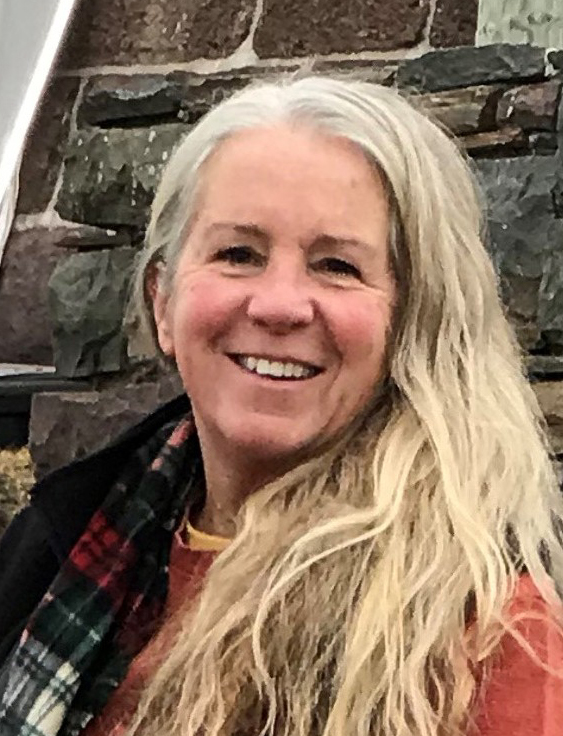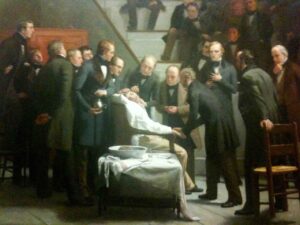Back in 2018, when I had the good fortune to be added to the Vita Brevis family of writers, one of my first posts was about my maternal grandfather, John Joseph Osborne, and the seven-year journey I had taken to learn about this man who had, we were always told, grown up an orphan.
Because I was starting with nothing more than my grandfather’s death certificate (which, fortunately, included his birthplace and parents’ names), I knew that my research would likely be a journey of discovery and, indeed, there were many revelations. Those discoveries resulted in a published book, and from the moment it arrived on my doorstep I wrestled with how, for the various book talks that were filling my calendar, I might present my long and winding and very detailed genealogical journey. In the same sense that no one really wants to see each and every vacation photo on the iPhone (do they?), I was mindful that my audiences likely did not want to endure (at least not all in one sitting) every episode of a story that embraced short histories of the Massachusetts Bay Colony and ancient Acadia as well as family trees reaching back to 1640 … and that was all before I even got to the main event of telling my grandfather’s story.[1]
After much consternation and consideration as to how I might present my journey to an audience, I settled on a four-quadrant learning matrix, variations of which have been used as frameworks for self-help and risk assessment. Generally, the four quadrants represent knowns and unknowns, stages of awareness, and levels of knowledge. The matrix helps to organize and analyze information, encouraging exploration, discovery, and insight by diagramming what we know (Known Knowns), what we know we don’t know (Known Unknowns), what we don’t want to know (Unknown Knowns), and, perhaps most important, what we don’t know we don’t know (Unknown Unknowns).
It’s a bit gibberishy, I know, but as I learned more about the matrix and its flexibility, it occurred to me that this personal and professional thinking tool could also be adapted to genealogical breakthroughs, to encouraging us to look at and reevaluate our research plan. In fact, I had been using, as most of us probably do, just such a process of inquiry – albeit quite haphazardly – all along, and without realizing it. So, rather than describing to my audiences what I discovered, I would try to describe how I made my discoveries.
[Rather] than describing to my audiences what I discovered, I would try to describe how I made my discoveries.
For genealogists, what we don’t know we don’t know may be the most intriguing quadrant of the matrix, the one with the most potential for discoveries and revelations – forward leaps rather than incremental steps. At the same time, it is the one most fraught with risk, because we never knew such things existed. I like to call it the “be careful what you wish for” box whose revelations are totally unanticipated and hard to imagine. One need only think about the Unknown Unknowns of DNA testing to understand the pitfalls. Because I knew nothing about my grandfather and his ancestry before beginning my research, each and every discovery, even learning his parents’ names and his Salem birthplace from his death certificate, was a revelation. I tried to prepare myself for wherever the journey took me. The more discoveries I was able to make, the more I was able to convert Unknown Unknowns to Knowns, often reflecting on how, before being bitten by the genealogy bug, we go about our lives blissfully ignorant about where our personal stories fit into history.
One such story began to take shape as I pieced together my Osborne family tree. My great-great-great-grandfather William Augustus Osborne (1814-1891) was the first of three generations of Osbornes employed in the then-thriving leather industry concentrated around Salem, Danvers, and Peabody, Massachusetts. Generally, the lives of working people leave less behind to tell their personal day-to-day story than do the lives of the rich and famous, but a small item in the Salem Register on Monday, 23 November 1846, offered a glimpse of Osborne’s day-to-day life that could never have been gleaned from a census or vital record.
Working at the rear of Frye Street, between Goodhue and Boston Streets, very near the railroad tracks, Osborne was maimed in an accident near his tan yard. “He was endeavoring to turn his horse and wagon from the track, as the locomotive was approaching, and unfortunately put his own foot over the rail, so that the wheels passed over it, crushing the lower part of his leg so badly that amputation was necessary.” The newspaper account went on to say that the operation was performed in the afternoon and “Dr. Morton’s preparation was administered by Dr. Fisk [sic], with the like success as in the case of the girl on Thursday.”
Had Osborne’s accident occurred just five weeks earlier, he would have endured the amputation, in all its excruciating pain, just as every amputation patient before him had, without surgical anesthetic. Instead, he benefited from the use of a “new gas” which a Boston dentist, William T.G. Morton, had first employed for tooth extraction. On 16 October 1846, Dr. Morton successfully demonstrated the use of ether on a surgical patient before an audience of doctors in an amphitheater at the Massachusetts General Hospital.[2] Among the earliest proponents of etherization was the prominent Salem surgeon and consultant to the Massachusetts General Hospital, Abel Lawrence Peirson (1794-1853). It was in Dr. Peirson’s Salem office in November 1846 that he applied ether anesthesia for two amputations: the left arm of a young Irish girl injured in a railroad accident, and the leg of William Augustus Osborne.
Osborne was an “intelligent tanner, about 30 years old,” wrote Peirson, “with a fracture of both bones in the middle of his left leg..."
Dr. Peirson submitted his two patient histories to the Boston Medical and Surgical Journal, several details of which helped to “humanize” William Osborne and, in a sense, allowed me, his great-great-great-granddaughter, to time travel to the very moment and hear his voice.[3] Osborne was an “intelligent tanner, about 30 years old,” wrote Peirson, “with a fracture of both bones in the middle of his left leg, his ancle [sic] crushed by the cars engaged in building the Salem and Methuen Railroad. I amputated the leg just below the knee. The patient required the vapor under Dr. [Cyrus] Fisk’s directions. He says he was not conscious of feeling any pain – and after the operation was finished and the ligatures applied, his consciousness returned, and, with great sincerity, he asked if his limb was taken off. He says, though he felt no pain, he was conscious of the presence of those around him, and he was obedient to the directions given him.” Osborne lived another forty-five years and, considering his travails, it was a good long life.
Dr. Peirson noted that the two surgeries he performed were the “first account of the use of ether in surgical operations outside of the Massachusetts General Hospital following the demonstration of October 16.” A year after his accident, Osborne was fitted with an artificial leg made by Benjamin Franklin “B.F.” Palmer who, on 4 November 1846 – almost at the exact moment of Osborne’s accident – was awarded the first American patent for an artificial leg. Just a month after Osborne received his new leg, his younger brother, Edwin, began working for Palmer in his New Hampshire workshop; following rave reviews at the 1851 Great Exhibition, Edwin Osborn managed Palmer's London workshop. In 1877, Edwin was awarded his own patent for an improved artificial leg. Out of his brother’s tragedy, Edwin Osborne, the surgeon-artist, had seized opportunity.
Having fit a personal story into history and converted many Unknown Unknowns into Known Knowns, I often contemplate whether learning and knowing something that was previously unknown makes a difference. Does it really matter that my great-great-great-grandfather was the third individual to benefit from the use of ether during a surgical procedure? Does it matter that his grandfather was a Revolutionary War soldier who marched on the Lexington Alarm on the morning of 19 April 1775? Does it matter that their ancestors were victims of the Salem Witchcraft hysteria?
Those not bitten by the genealogy bug will say – as someone once did when I mentioned a Mayflower ancestor – that those discoveries and three dollars would get me a cup of coffee, the suggestion being that only the three dollars is worth anything. But anyone who has caught the fever knows the truth of the old proverb: that to forget one’s ancestors is to be a brook without a source, a tree without a root. Knowing your family … priceless. There are some things money can’t buy.
Notes
[1] Amy Whorf McGuiggan, Finding Emma: My Search for the Family My Grandfather Never Knew (Amherst, Mass.: Small Batch Books, 2019).
[2] The amphitheater, now known as the Ether Dome, was designated a National Historic Site in 1965.
[3] Since 1928, the Journal has been published as the New England Journal of Medicine.
Share this:

About Amy Whorf McGuiggan
Amy Whorf McGuiggan recently published Finding Emma: My Search For the Family My Grandfather Never Knew; she is also the author of My Provincetown: Memories of a Cape Cod Childhood; Christmas in New England; and Take Me Out to the Ball Game: The Story of the Sensational Baseball Song. Past projects have included curating, researching, and writing the exhibition Forgotten Port: Provincetown’s Whaling Heritage (for the Pilgrim Monument and Provincetown Museum) and Albert Edel: Moments in Time, Pictures of Place (for the Provincetown Art Association and Museum).View all posts by Amy Whorf McGuiggan →
